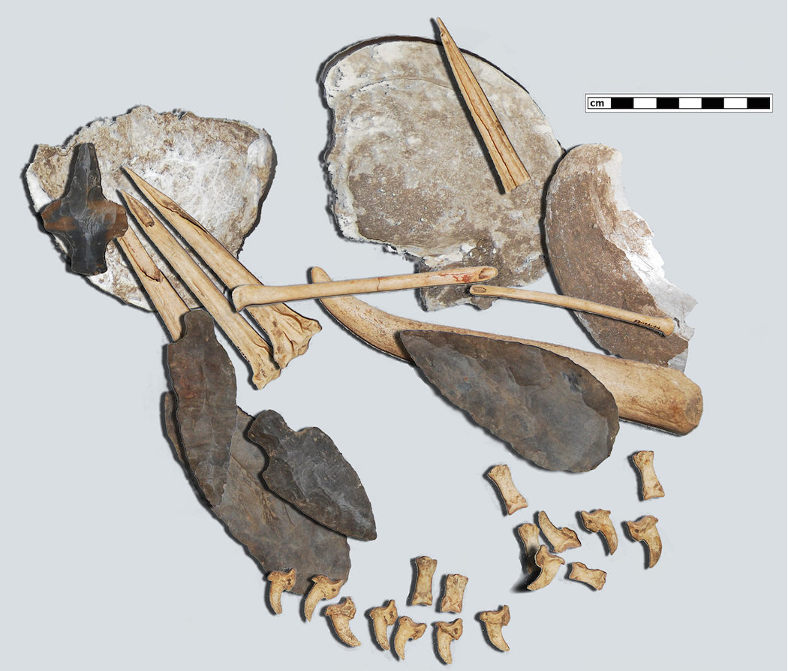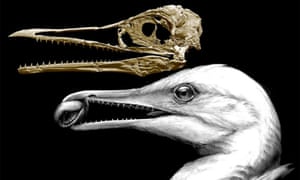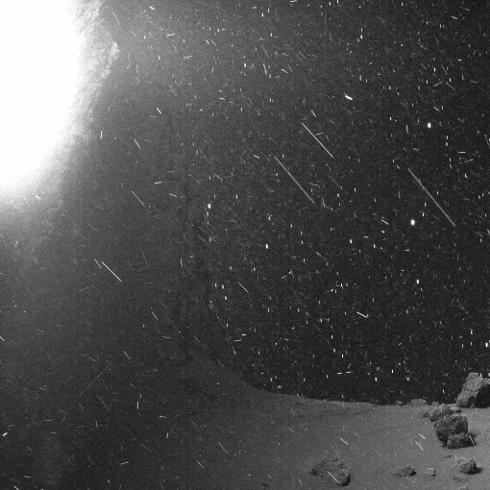via the OUP blog by Elkhonon Goldberg

Child painting by EvgeniT. CC0 via Pixabay
Creativity research has come of age. Today, the nature of the creative process is investigated with every tool of modern cognitive neuroscience: neuroimaging, genetics, computational modeling, among them. Yet the brain mechanisms of creativity remain a mystery and the studies of the brains of “creative” individuals have so far failed to produce conclusive results.Continue reading
==============================
via Interesting Literature
What is the meaning of this classic fairy tale?

What is the story of ‘Jack and the Beanstalk’ all about? And what is the moral of this story? It’s one of the best-known and best-loved fairy tales in Britain, and also – as we will see – one of the oldest.
Continue reading
==============================
via Boing Boing by Clive Thompson

Archaeologists have long known that tattooing goes back for millennia. But recently they made a cool find: what appears to be a Native American tattoo kit that's at least 3,600 years old.
The kit, which includes a bunch of pointy wild-turkey bones, was unearthed decades ago, but recently came under closer scrutiny.
Continue reading
==============================
via About History by Alcibiades

Taoism or Daoism is a Chinese philosophy and folk religion of people primarily in the rural areas of China. The primary idea and focus of Taoism is the Tao (way, path), which is important to be followed, not taking any action that is contrary to nature and finding the place in the natural order of things. Taoism has had a big impact on Chinese civilization and, surprisingly, on science. Researching the natural world, to help humankind, a number of important discoveries were made. For example, the search for the “elixir of immortality” led to the invention of gunpowder and improved Chinese medicine in the effort to align human life with cosmic energy, the magnetic compass was discovered, and other contributions that had an impact on Chinese culture and the world.
Continue reading
==============================
via the Guardian by Nicola Davis

Flying dinosaurs still had dinosaur-like skulls, but gradually more birdlike features evolved. The Ichthyornis dispar looks like a bird, but still has the sharp teeth of a dinosaur. Photograph: Michael Hanson and Bhart-Anjan S. Bhullar
Scientists have reconstructed the skull of an Ichthyornis dispar, a very early bird species that still had the sharp teeth of a dinosaur
It was one of the fossils Darwin hailed as evidence of evolution. Now scientists have unveiled four skulls of an ancient toothed seabird in a study experts say reveals the face of early birds.
Thought to have lived between 66 and 100m years ago the gull-like bird, known as Ichthyornis dispar, was first written about in the 19th century by American palaeontologist Othniel Marsh after fossil remains were unearthed in the US.
These revealed that the animal’s body was similar to modern birds in many respects. But there was a startling difference: it had jaws which housed sharp teeth.
Continue reading
==============================
via Arts & Letters Daily: Tyler Malone in Lapham’s Quarterly
Getting lost in the text-cities of Joyce, Döblin, and Dos Passos.

From the Back Window—291, 1915. Photograph by Alfred Stieglitz. The Metropolitan Museum of Art, Alfred Stieglitz Collection, 1949.
Sometimes I forget that I’ve never been to Dublin. I feel its cobblestones under my feet. I hear the “shouts in the street” of Irish schoolboys—what Stephen Dedalus calls “God” in James Joyce’s Ulysses—as clearly as I do the susurrations of my dog Bloom beneath my desk as I write. I picture the cemetery where my dog’s namesake, Leopold Bloom, attends the funeral of Paddy Dignam, spying at the edges of the funeral party a “lankylooking galoot” wearing a mackintosh, more vividly than I can any of the cemeteries in which my grandparents are buried. I have an uncanny familiarity with what Dedalus elsewhere calls the “items in the catalogue of Dublin’s furniture”: the Martello Tower at Sandycove, the Forty Foot promontory, the “scrotumtightening sea” below, the “unwholesome sandflats” of Sandymount Strand, the residence at 7 Eccles Street, Sweny’s Chemist, Trinity College, Merchant’s Arch, where a man might buy a smutty book like Sweets of Sin for his wife, and on through to the Liffey.
Continue reading
==============================
via Boing Boing by David Pescovitz

Landru79 created this spectacular GIF from images captured in 2016 on the surface of Comet 67P/Churyumov–Gerasimenko by the European Space Agency lander Philae deployed by the Rosetta probe. The video is significantly sped up, compressing 25 minutes into a few seconds of intense action. But what exactly are we looking at in this pandemonium?
Continue reading
==============================
via 3 Quarks Daily: Jonathan Beckman in 1843 Magazine
The marriage of sated appetites and adventurous conversation has a long history. In Ancient Greece, philosophical discourses were washed down with jugs of wine at banquets known as symposia. There was always a risk that some people would over-indulge. In the most famous description of a symposium, Plato describes how the guests, who included Socrates and Aristophanes, were expounding on the nature of love when they were interrupted by the arrival of a boozed-up general, Alcibiades. Table talk was considered an art to be mastered. Athenaeus, a Greek grammarian of the third century AD, wrote a 15-volume work entitled Deipnosophistae (“The Learned Banqueters”) about a series of dinners in which conversation ranged from philology to homosexuality.
Continue reading
==============================
via the Big Think blog by Robby Berman
Researchers believe that the practice of sleeping through the whole night didn’t really take hold until just a few hundred years ago.
She was wide awake and it was nearly two in the morning. When asked if everything was alright, she said, “Yes.” Asked why she couldn’t get to sleep she said, “I don’t know.” Neuroscientist Russell Foster of Oxford might suggest she was exhibiting “a throwback to the bi-modal sleep pattern." Research suggests we used to sleep in two segments with a period of wakefulness in-between.
Continue reading
==============================
via Interesting Literature
Although he is better-known as a novelist, D. H. Lawrence also wrote a great deal of poetry. ‘New Heaven and Earth’, a long poem he wrote in 1917 during the First World War, captures Lawrence’s anger and despair over the destruction of the war, and might be regarded as a forerunner to greater (and longer) poems written by Lawrence’s fellow modernists, such as T. S. Eliot’s The Waste Land.
Continue reading
No comments:
Post a Comment